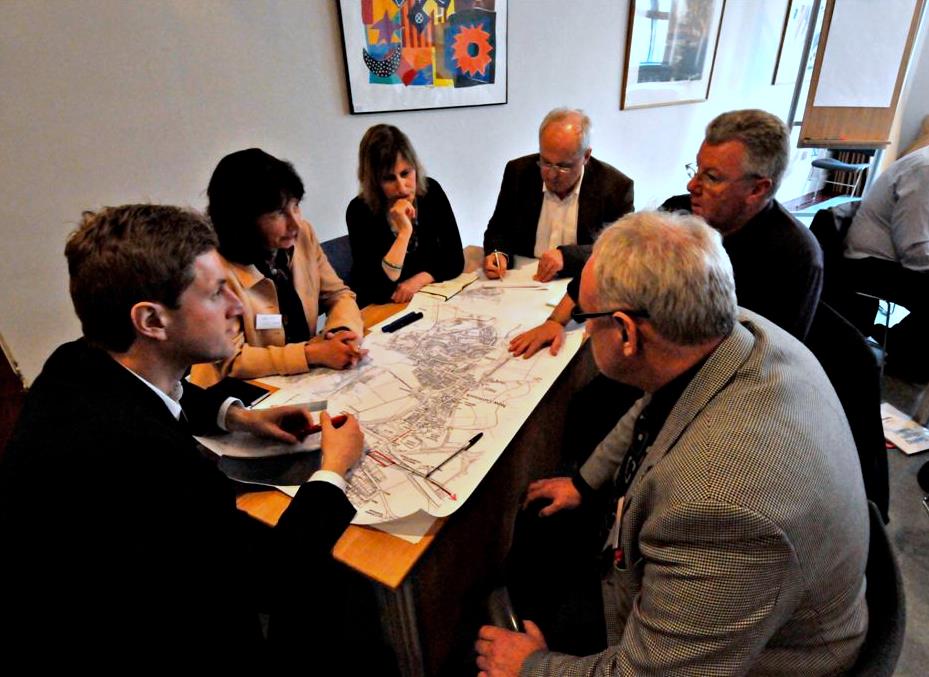nick wright planning
NEWS
misunderstanding masterplanning
By Nick Wright
on December 31, 2009
all posts
masterplanning
pan 83
pan83
planning advice note 83
 Masterplanning has seen a resurgence in the last decade. Check out any planning or architectural journal or website, and the chances are there will be mention of someone's latest masterplan for somewhere. Even national planning policy has jumped on the bandwagon, with a Scottish Government planning advice note (PAN 83) dedicated specifically to masterplanning.
Masterplanning is certainly a useful tool for planners, as PAN 83 tells us in its concluding section:
Masterplanning has seen a resurgence in the last decade. Check out any planning or architectural journal or website, and the chances are there will be mention of someone's latest masterplan for somewhere. Even national planning policy has jumped on the bandwagon, with a Scottish Government planning advice note (PAN 83) dedicated specifically to masterplanning.
Masterplanning is certainly a useful tool for planners, as PAN 83 tells us in its concluding section:
"Masterplanning has an important role in Scotland's future by helping us to create well-designed built environments that make us feel welcome and secure, and that promote healthier lifestyles, reduce our environmental impact, are adaptable and have lasting economic and social benefits."Masterplanning can achieve all that because of its role as the critical link between planning - a process which can on occasion tend towards idealism rather than realism - and implementation. Masterplanning is not a statutory planning tool, like Local Development Plans or planning applications. But a properly prepared masterplan can do something that these statutory tools can never do: it can connect planning and delivery by creating a realistic framework for developing a site that takes into account financial viability, phasing and other practical implementation issues alongside normal planning considerations - preferably through a collaborative process which involves a range of stakeholders. In other words, it provides a mechanism to combine idealistic and realistic concerns - and produce development proposals that are both good placemaking and financially viable. Where masterplanning falls down, in my opinion, is that it is increasingly seen as relevant for every situation. Even the government's advice, in PAN 83, contributes to this by stating that:
"A masterplan can be prepared for almost any site... In general, masterplanning is required for areas of large-scale change such as town extensions; regeneration projects; town and city centres; housing developments; and places where significant environmental assets require protection."What's missing from the advice is explicit recognition that masterplanning actually forms part of a sequence of other documents, such as city visions, strategic frameworks, urban design frameworks, design codes and site briefs (although not all of these documents will be needed everywhere). Masterplans, as the step that links planning and implementation, should be informed by design frameworks and then set the parameters for design codes and site briefs. A good, simple explanation of how masterplans fit into the process is contained in the Urban Design Compendium, published by English Partnerships in 2000 but still a good sourcebook. Perhaps because it lacks the tight legal definition of a statutory planning tool, masterplanning has become a confused and misunderstood concept. My impression is that many documents touted as masterplans are really no more than an attractively presented proposal for how a site could be developed - with little attempt to merge planning and implementation into a single proposal, which is where the real value of masterplanning lies. We now also have government advice which implies that masterplans can sit in isolation, without preparing the bigger picture (the visions, strategic frameworks and urban design frameworks) to set the parameters for the site-specific, delivery-focused documents that are masterplans. I sometimes wonder if I am the only one who is confused about what masterplanning is meant to be about. More importantly, this confusion and misunderstanding around the concept of masterplanning erodes the true value of what masterplanning can add to the planning and development process - which is very unfortunate.